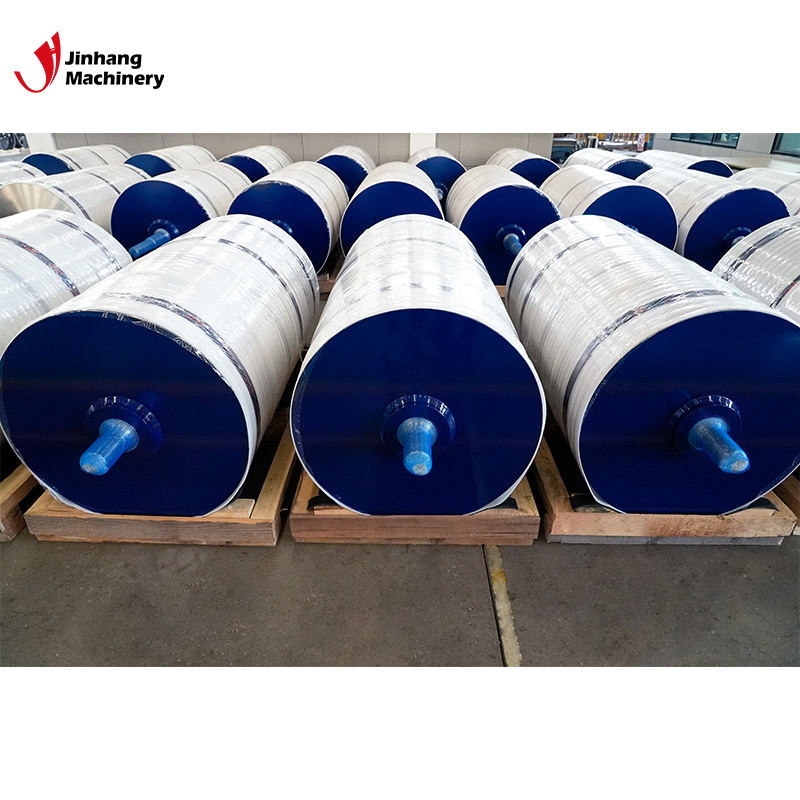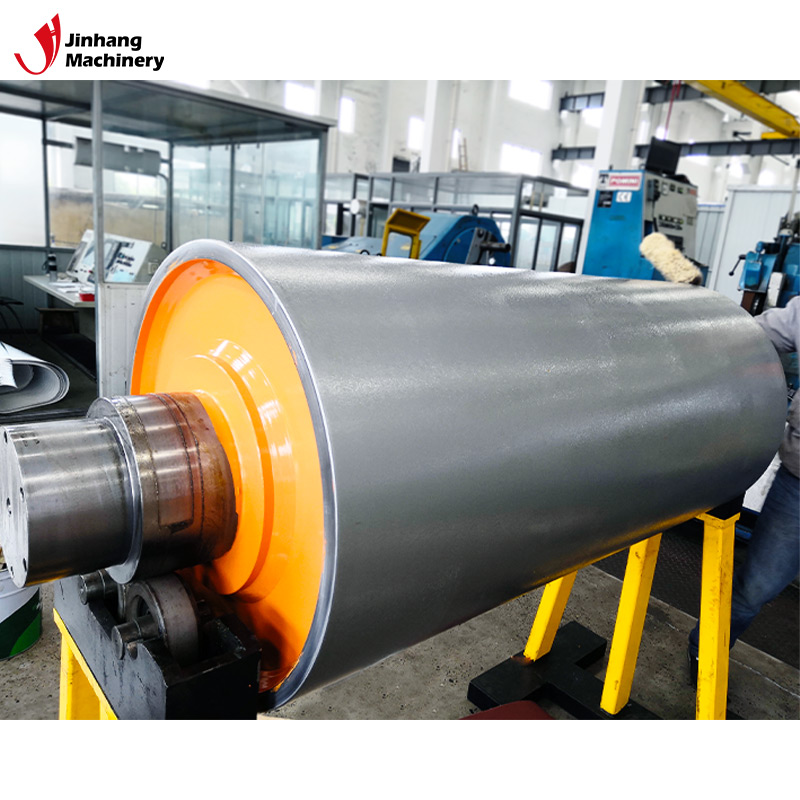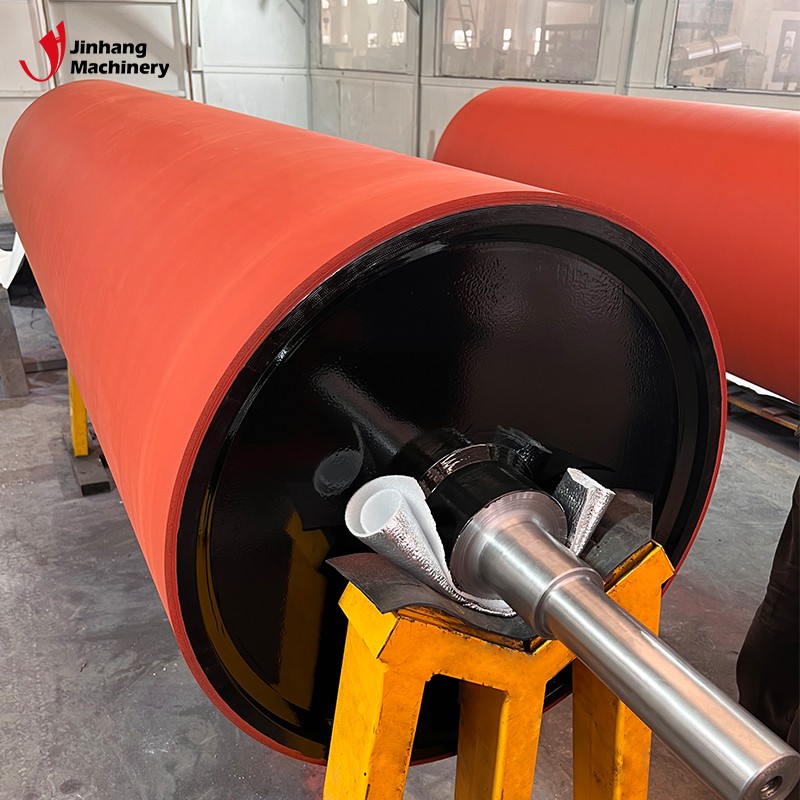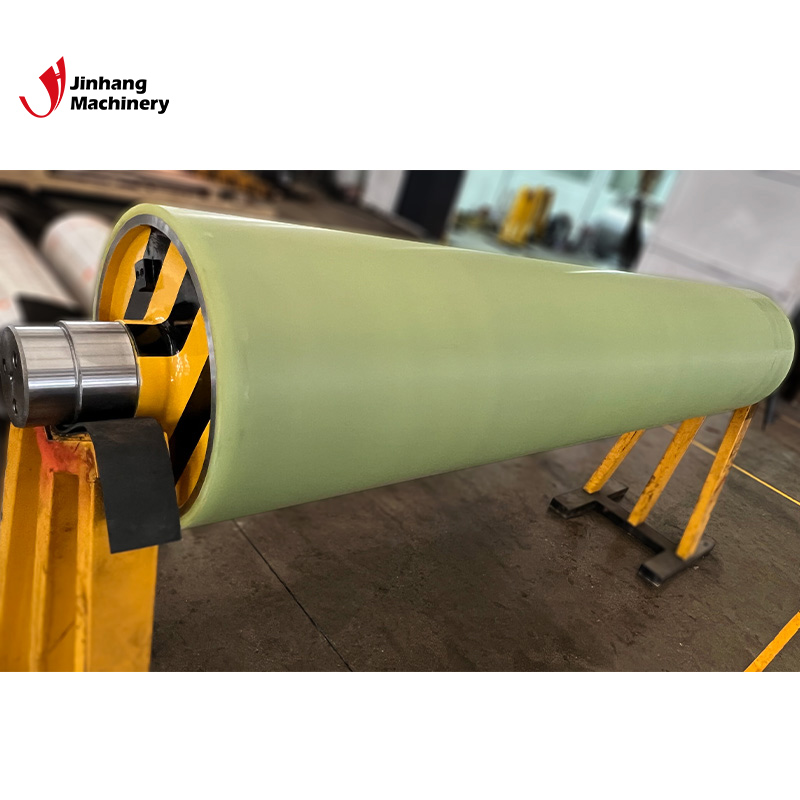What is the hardness range of hydrogenated nitrile rubber roller?
Hydrogenated nitrile rubber roller (HNBR roller for short) is a high-performance industrial roller widely used in the fields of automobile, petroleum, chemical, textile, food processing, etc. Its main advantages are excellent wear resistance, high temperature resistance, chemical corrosion resistance and other characteristics, so it plays an important role in many harsh industrial environments. In order to meet the needs of different working conditions, the hardness of hydrogenated nitrile rubber roller has become one of the key parameters affecting its performance. Rollers of different hardness are suitable for different working environments. Choosing a hydrogenated nitrile rubber roller with appropriate hardness can not only improve production efficiency, but also extend the service life of the roller.
This article will deeply explore the hardness range of HNB rubber roller, the impact of hardness on its performance, and how to choose a HNB rubber roller with appropriate hardness according to different application requirements.

What is the hardness range of hydrogenated nitrile rubber roller?
Hydrogenated nitrile rubber (HNBR) is a synthetic rubber modified by hydrogenation process based on traditional nitrile rubber (NBR). The hydrogenation process significantly increases the saturation of nitrile rubber, thereby improving its resistance to high temperatures and chemicals. In the manufacturing process of hydrogenated nitrile rubber rollers, hardness is an important parameter to measure its performance, usually expressed in Shore hardness.
The hardness range of hydrogenated nitrile rubber rollers is usually between 50A and 90A. Specifically, hydrogenated nitrile rubber rollers with lower hardness (such as 50A-60A) are mainly used in situations requiring higher elasticity and better adaptability, while HNB rubber rollers with higher hardness (such as 80A-90A) are suitable for environments with greater pressure and high temperature.
● Low hardness range (50A-60A): The hardness of HNB rubber rollers within this range usually shows better elasticity and toughness, and is suitable for low-load, high-precision work situations, such as rollers in some precision printing or packaging processing. Low hardness rollers can better adapt to irregular surfaces and reduce material damage.
● Medium hardness range (60A-75A): Hydrogenated nitrile rubber rollers in this hardness range have good comprehensive properties, which can maintain a certain elasticity and withstand moderate pressure. They are commonly used in occasions requiring moderate wear resistance and elasticity, such as general conveying, molding and casting processes.
● High hardness range (75A-90A): Hydrogenated nitrile rubber rollers with higher hardness are suitable for high-load and high-speed operation conditions, such as high-precision printing, rolling, heavy-load mechanical transmission and other fields. High-hardness rollers have higher wear resistance and deformation resistance and can withstand greater pressure and temperature.

What effect does hardness have on the performance of HNB rubber rollers?
The hardness of hydrogenated nitrile rubber rollers not only affects their wear resistance and service life, but is also directly related to their applicability. Hydrogenated nitrile rubber rollers with lower hardness have better elasticity and softness, while rollers with higher hardness have stronger wear resistance and deformation resistance. Specifically, the influence of hardness on the performance of HNB rubber roller is mainly reflected in the following aspects:
1. Elasticity and adaptability
Hydrogenated nitrile rubber roller with lower hardness has better elasticity and adaptability, and can better adapt to irregular surfaces. Softer rollers can provide a certain buffering effect when contacting materials, reduce damage to the surface of materials, and are especially suitable for precision machining and applications with high surface requirements. In high-speed rotation or complex working environments, low-hardness rollers can improve work efficiency and ensure machining accuracy.
However, low-hardness rollers usually do not have strong wear resistance and pressure resistance, so their scope of application is mainly limited to working conditions with light loads and low friction.
2. Wear resistance and service life
Hydrogenated nitrile rubber rollers with higher hardness usually have stronger wear resistance and pressure resistance, can withstand higher friction and load, and are therefore suitable for high-load, high-pressure, and high-temperature working environments. For rollers that need to be used for a long time, higher hardness hydrogenated nitrile rubber can effectively extend the service life of the rollers.
However, hydrogenated nitrile rubber rollers with too high hardness may have some compromises in elasticity and adaptability. In some working conditions that require higher elasticity and buffering, the use of too hard rollers may cause damage to the material surface or reduce processing accuracy.
3. Deformation resistance
As the hardness increases, the deformation resistance of HNB rubber rollers will also increase. Rollers with higher hardness can maintain good shape stability under high pressure, high temperature and high speed working environments to avoid deformation, cracks or indentations. High-hardness rollers can maintain their original shape when subjected to greater pressure, so they are often used in some high-precision and high-strength industrial applications.
However, too high hardness may also cause the rollers to lack sufficient elasticity and be unable to adapt to certain complex working conditions.
4. Thermal stability and high temperature resistance
The hardness of HNB rubber rollers is closely related to their high temperature resistance. Hydrogenated nitrile rubber rollers with higher hardness usually have stronger high temperature resistance and can work stably for a long time under high temperature environments. In some high-temperature processing, heat treatment and other processes, rollers with higher hardness can withstand higher temperatures and are not easy to deform or age.
In contrast, low-hardness hydrogenated nitrile rubber rollers may lose elasticity in high-temperature environments, resulting in performance degradation, or even melting or deformation.
5. Friction and processing accuracy
The hardness of HNB rubber rollers is closely related to their surface friction. Rollers with lower hardness usually have higher friction and are suitable for some working conditions that require higher friction, such as when performing some precision transmission or surface treatment. Rollers with higher hardness have lower friction due to their high surface hardness, and are suitable for high-speed operation, heavy-load transmission and other occasions.

How to choose a HNB rubber roller with appropriate hardness?
Choosing a hydrogenated nitrile rubber roller with appropriate hardness requires comprehensive consideration of the working environment, load requirements, temperature changes, friction requirements and other process parameters. Here are a few key considerations to help engineers and purchasers choose the right hardness roller:
1. Workload and pressure
When selecting HNB rubber rollers, the hardness needs to be determined based on the actual work load. If the roller will be subjected to greater pressure and load, a higher hardness roller should be selected to ensure that it has sufficient wear resistance and deformation resistance. On the contrary, for low-load applications, a low-hardness hydrogenated nitrile rubber roller can provide better flexibility and adaptability.
2. Temperature range
Temperature is an important factor affecting the hardness of HNB rubber rollers. For high-temperature working environments, higher hardness hydrogenated nitrile rubber rollers are usually selected to ensure that it can maintain good stability and wear resistance at high temperatures. For low-temperature working environments, low-hardness rollers may be more suitable because softer rollers at low temperatures can provide better adaptability and flexibility.
3. Friction requirements
The magnitude of friction also has a great impact on the selection of roller hardness. In applications that require higher friction, low-hardness rollers can provide a larger contact area, thereby increasing friction. On the contrary, in applications that require less friction, rollers with higher hardness should be selected.
4. Surface treatment requirements
For some high-precision processing and surface treatment processes, it is particularly important to choose rollers with appropriate hardness. Rollers with low hardness can provide better adaptability, reduce surface damage and processing errors, while rollers with high hardness can improve wear resistance and service life.
5. Service life of rollers
During long-term use, hydrogenated nitrile rubber rollers with higher hardness usually have longer service life. For applications that require long-term operation and harsh working environments, choosing HNB rubber rollers with higher hardness will provide better economic benefits.

Affordable Precision Rolls – Customized for Your Industry
If you need precision rolls at affordable prices, JH Machinery has got you covered. Our rolls are used across various industries, including packaging, metallurgy, and automotive testing. We offer a range of customizable options, from heating and cooling rolls to rubber and tungsten carbide-coated rolls. Our factory in Foshan, China, guarantees low prices, bulk discounts, and high-quality manufacturing standards. Contact us for a quote and take advantage of our ongoing promotions!
